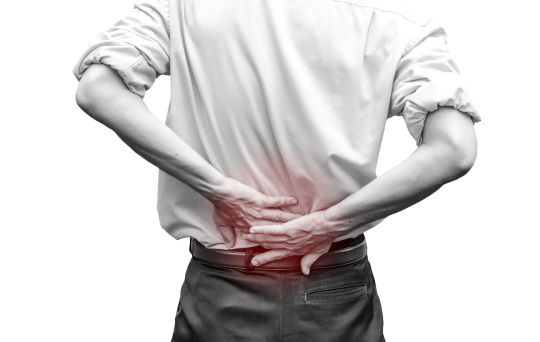#spmocs
Note
Hey Cress, how’s Dimentio ;)

(Realization)

(She didn’t know how to respond)
(this ask made me die also sorry if it looks bad)
4 notes
·
View notes
Text

Something still bothers me about her design idk what it is- I think I’m struggling a little with colors here
8 notes
·
View notes
Text





Aaaaah, I can finally share this. Am absolutely THRILLED I got commissioned for some merch designs for one of my favourite musicians, Adrienne Cowan!
If you haven't already, please check out her work.
A smol selection:
Her band: https://youtube.com/watch?v=_O7LUgm9JKw…
SPMoC: https://youtube.com/watch?v=cCMc7vZWuAk…
Avantasia: https://youtube.com/watch?v=QAYgh9lhWj8
She also has a Patreon: https://t.co/gpnOYoB4hq
This was one of the most fun jobs for me so far and I'm beyond happy that of all people, she picked me to create those for her.
#fan merch#merch design#commisions open#seven spires#adrienne cowan#art#artists on tumblr#illustration#fantasy art#foxandrabbitart
11 notes
·
View notes
Text
Low Back Pain Study Reprinted By John Boyer Chiropractor
Reprinted by Dr. john boyer chiropractor

The 2009 Spinal Model of Care published by the Western Australian Health Department via the Musculoskeletal Health Network would benefit from an update. Best-evidence synthesis and cost-risks-benefits estimations suggest that such guidelines should provide:
(1) The early assessment of patients with non-malignant spinal pain (particularly low back) by a musculoskeletal clinician, be it a chiropractor, musculoskeletal physician, osteopath or musculoskeletal physiotherapist with referral within the early stages of the disorder.
(2) The provision of manipulative therapy, where indicated, as a first-line treatment while also providing rehabilitation, health promotion, and contemporary wellness/wellbeing management with the intention of avoiding chronicity. Emerging workforce capacity suggests that early assessment and evidence-based management of non-malignant spinal pain is feasible, leading to better patient outcomes. The authors and the association are hopeful that providing this submission in open access may prove useful for advocates of the chiropractic profession in other jurisdictions.
Background
The importance of addressing spinal pain in the Australian community in a cost effective and clinically appropriate manner is illustrated in a series of studies emerging from the Global Burden of Disease 2010 Project. It is well-known that musculoskeletal conditions, such as low back pain, neck pain and arthritis, affect more than 1.7 billion people worldwide and are set to become more prevalent with a growing, ageing, developed world population. Australian chiropractors may occupy a pivotal role in the cost effective management of these clinical presentations.
In 2009, the Western Australian Health Department via the Musculoskeletal Health Network, published evidence based guidelines in the form of a model for the management of spinal pain. Overall, the key objectives, as reported in this model of care are:
(a) Devolution of musculoskeletal health services from hospital-based to community-based services.
(b) A multidisciplinary approach to care.
(c) Better and early access for patients to assessment and appropriate care.
(d) Prevention of chronic spinal pain, where possible.
(e) Improvement upon clinical guidelines for best practice and target professional education regarding spinal pain.
(f) Dissemination of information to the public and healthcare professionals regarding self-help and evidence-based care. These objectives all resonate strongly with the chiropractic profession.
In 2012 the state of Oregon adopted guidelines for the management of Low Back Pain which recommend spinal manipulation as the only non-pharmacological treatment and further that spinal manipulation be considered as a first tier intervention before medications [including simple analgesia]. CAAWA recognised the implications for Australia and accordingly funded a project tasked to compose a submission the WA Health which echoed the Oregon initiative. The following paper is a synopsis of that submission.
The full submission sets out to provide a synopsis of the most recent research evidence to inform best practice for spinal pain, particularly low back pain, and maps this evidence against the recommendations of emerging musculoskeletal service plans, with a view to building upon the current recommendations in the WA Spinal Pain Model of Care. The submission outlines an initial strategy to translate research into practice and enhanced workforce capacity by proposing a consensus-led approach to care provision. The document outlines contemporary evidence on spinal manipulation and presents the benefits of a conservative approach in terms of cost and risk analysis, workforce capacity and community engagement.
Introduction

Regardless of one’s individual ideological standpoint, one has to concede that spinal pain is by far the most common problem (symptom) encountered in chiropractic practice, particularly low back pain. Whether one’s approach to management is subluxation-based, wellness care-based or exclusively that of symptom reduction, the goal for all chiropractors is surely to ‘get patients better’ and keep them better. Another reality is that over 95% of surveyed chiropractors provide patients with the high-velocity, low/controlled-amplitude thrust technique, regardless of whether this is described as an “adjustment”, a “manipulation” or a “technique”.
With this in mind, a significant opportunity is now unfolding within the mainstream healthcare system in Western Australia where chiropractic can define a concrete role and expand on current practice by offering what most chiropractors do, as indicated previously, without dictating practice or impinging upon professional autonomy. Over the last 10 years or so there has been a paradigm shift within mainstream healthcare related to the treatment and management of musculoskeletal disorders (among others), such as osteoporosis, arthritis, back pain and fibromyalgia.
This has been driven internationally by, firstly, escalating inflationary costs of care and expensive healthcare technology, to the point where cost-containment is essential, particularly with increasing demand on healthcare services and reduced healthcare budgets. Secondly, mainstream treatments for many musculoskeletal disorders, particularly chronic problems, have been met with limited success, resulting in a re-think among policy-makers and clinicians. Much of the healthcare discourse and focus has now shifted (back) to health promotion, emphasizing self-help management and disease prevention.
Many of these musculoskeletal disorders, such as spinal pain, are complex and require a care strategy beyond a tablet or injection. Attention needs to be given to not only the most effective, evidence-based management but to other factors, such as poor lifestyle, lack of exercise and patient education.
This submission presents an overview of emerging and existing research evidence in support of manual and manipulative therapy, particularly spinal manipulative therapy (SMT), as a first-line treatment for acute non-malignant spinal pain, with potentially significant cost-savings over usual medical care. This does not mean the authors advocate ignoring usual medical care, but rather the application of judicious medical treatment with the addition of SMT to the care package.
Research evidence supports the early referral and assessment of spinal pain patients by an appropriately trained and vetted musculoskeletal clinician, like a chiropractor, musculoskeletal physician, osteopath or musculoskeletal physiotherapist, with a view to offer treatment; facilitate health promotion, rehabilitation and patient education i.e. to apply the right treatment, at the right time, in the right place. Early referral and assessment also has potential cost savings by avoiding unnecessary imaging/investigations, hospitalisations, medical procedures and surgery. Needless to say, healthcare policy-makers and bureaucrats are very interested due to potential cost savings, which could be as much as a 20% saving on current expenditure for low back pain within mainstream healthcare.
The CAA (WA), among other professional organisations, is now lobbying to update current Australian clinical guidelines for spinal pain (NHMRC Acute Musculoskeletal Pain Guideline, 2004) and expand on the WA Spinal Pain Model of Care (2009) to incorporate SMT as first-line treatment for non-malignant low back pain and the need for early referral and assessment by an appropriately trained and vetted musculoskeletal clinician. With chiropractors being skilled in primary-care of non-malignant spinal pain (and spinal health), it is only logical to offer their services and participate in the management of spinal pain patients, within a multidisciplinary context. This would also have numerous major advantages for chiropractic:
(a) It would define a recognized role for chiropractic within mainstream healthcare without relinquishing professional autonomy.
(b) It would expand on chiropractic practice by adding to current practice and creating new employment opportunities.
(c) It could potentially expand on (Australian) Medicare reimbursement for chiropractic services (if the lobby is successful). This would, at least in part, secure the future of an expanding chiropractic profession within a very competitive marketplace.
The Chiropractors Association of Australia (Western Australian Branch) (CAAWA), and other professional organisations like the Australian Physiotherapy Association and Australian Osteopathic Association have been actively involved in key Western Australian Health committees and working groups, and have prepared specific reports, with the objective of lobbying for change.
Encouragingly, efforts have been met with broad agreement, support and enthusiasm by key persons and bodies within WA Health. To date, the above goals of SMT as first-line treatment and early access of patients to musculoskeletal clinicians has not yet been realized, and success is not guaranteed, but progress so far has been very pleasing. This present submission to the Musculoskeletal Health Network of WA has been endorsed by the CAA(WA), The Australian Osteopathic Association and The Manipulative Physiotherapy Association (WA).
Subsequent to the submission, the WA Health Department sought expressions of interest from health professionals, key stakeholder organisations, consumers and carers to participate in a Pain Health Working Group. The Pain Health Working Group will facilitate development of an evidence based model of care, or framework, for all persistent pain management within Western Australia, and recommend strategies for implementation. A chiropractor is now a member of this new Pain Health Working Group.
The Musculoskeletal Health Network (WA), via activities such as the development of the Spinal Pain Model of Care (SPMoC), has already made significant strides in identifying key issues related to spinal pain management and has exposed gaps in future service provision. In particular, a multidisciplinary approach to care of spinal pain delivered at the local community level has been earmarked for improvement in service provision, being confirmed by the outcomes of the WA Musculoskeletal Network Stakeholder Forum Report. The emphasis on musculoskeletal health, which includes spinal pain, is also reflected in the newly-launched PainHEALTHwebsite, designed to help consumers with musculoskeletal pain access reliable and usable evidence-based information, with the view to engage with those patients and the broader community.
New Evidence on Spinal Manipulation

In a recent randomized controlled trial following guidelines-based care by Bishop et al. (2010), significantly greater improvement for acute mechanical low back pain of 16 weeks or less was achieved with spinal manipulative therapy than usual medical care. Patients receiving usual medical care had both inferior functional outcomes and higher rates of prescribed opioid analgesics (80%).
Furthermore, medically managed patients received a high percentage (60%) of guideline-discordant treatment, like bed rest, x-rays and back supports. Parkin-Smith et al. (2012) showed that an evidence-based package of exercise, patient education and manual/manipulative therapy is of benefit for acute mechanical low back pain of less than 4 weeks duration. This outcome supports Childs et al. (2004) who indicated that spinal manipulation offers good outcomes in acute low back pain cases where the pain is of less than 16 days duration (2 weeks) and where the pain does not extend below the knee.
In a randomized controlled trial, von Heymann et al. (2013) found that for a subgroup of patients with acute nonspecific low back pain LBP (<48 hours duration), spinal manipulation was significantly better than a non-steroidal anti-inflammatory drug (Diclofenac) and clinically superior to placebo. Goertz et al. (2013) demonstrated that spinal manipulative therapy in conjunction with standard medical care offers a significant advantage for decreasing pain and improving physical functioning when compared with standard care alone for men and women between 18 and 35 years of age with acute low back pain. This evidence firmly supports the early access of patients with low back pain to assessment and appropriate treatment, including spinal manipulation where indicated, for the best possible outcome.
The importance of early access to appropriate care cannot be underestimated, since the aim of appropriate care is to alter the course of the disorder, particularly since low back pain is well-known to be either episodic or progress to chronicity. Hestbaek et al. indicated that low back pain has an episodic trend in up to 80% of cases, as opposed to resolving fully, and Henschke (2008) reported that up to 30% of acute back pain becomes chronic. Around 25% of Australians who experience low back pain continue to have persistent or recurrent episodic back pain. Indeed, in a cohort of patients with acute low back pain in Australian primary care, prognosis was not as favourable as claimed in clinical guidelines – recovery was slow for most patients and nearly 33% of patients did not recover from the presenting episode, implying chronicity and added healthcare costs.
Appropriately trained musculoskeletal clinicians, such as chiropractors, musculoskeletal physicians, osteopaths and musculoskeletal physiotherapists, could facilitate access to care at a community level and also identify predictors of chronicity in affected patients, which could subsequently be addressed through health/lifestyle modification and utilisation of local healthy lifestyle programs. For example, a package of care using the latest evidence-based management including patient education, staying active, exercise, lifestyle modification, spinal manipulative therapy and if necessary, simple analgesia, is likely to yield the best-possible outcomes. This “package of care” approach would be particularly useful if combined with existing and currently-funded programs focusing on lifestyle change and chronic pain prevention, such as the Medicare Local Healthy Lifestyle Program & Chronic Pain Program and the Self-Educative Pain Sessions (STEPS) program with a view to preventing chronicity.
Cost Analysis
A major reason for escalating healthcare costs relates to inflation; annual expenditures for spinal pain management in 1995 in the United States was calculated to be US$7.3 billion, whereas in 2007 the cost for drugs had skyrocketed some 271% to $19.8 billion, accounting for a sizable 23% portion of total direct healthcare expenditures, these trends being reflected in Australia. Major elements accounting for this increase included the wider use of expensive drugs and spinal injections.
A systematic review of the cost-effectiveness of guideline-endorsed treatments for low back pain involving 26 studies demonstrated that spinal manipulation, interdisciplinary rehabilitation, exercise, acupuncture, or cognitive-behavior therapy all were cost-effective in individuals with sub-acute or chronic low back pain, while no evidence was found in support of medications, yoga, or relaxation. Furthermore, the same study indicated that care from a general practitioner did not appear to be the most cost-effective means for managing low back pain, considering that adding spinal manipulation, exercise, behavioural counselling, and education/advice was more cost-effective than usual care from a general practitioner alone. An additional systematic review published elsewhere has supported the cost-effectiveness of spinal manipulative therapy, either alone or in combination with other treatment approaches.
An Australian led investigation only recently reported by Lin et al. (2013), showed that spinal manipulation is cost-effective for sub-acute and chronic low back pain and at least as cost-effective as other forms of conservative treatment. Fritz et al. (2013) concluded that, at the very least, manipulative therapy is not associated with increased health care costs or utilisation of specific services following a new primary care low back pain consultation. An earlier extensive study from the United Kingdom—the BEAM Trial—was a randomized trial based upon 181 general practices and concluded that spinal manipulation is a cost-effective addition to “best care” in general practice.
Recent Workers Compensation data from the USA suggest that patients with occupational spinal injuries visiting a surgeon first are significantly more likely to receive spinal surgery (42.7%) than those whose first visit was with a musculoskeletal clinician (1.5%), in this instance a chiropractor. This association holds true even when controlling for injury severity and other measures, implying a significant cost saving and emphasises the importance of fast access to appropriate assessment and care, so that best practice care may ensue at an early stage of the disorder.
Retrospective data from the Division of Workers’ Compensation Claims in Florida revealed drastic savings when chiropractic was compared to non-chiropractic care for specific low back injuries during the period 1994-1999. Here total costs per claim were less than half for chiropractic care ($7,500 vs $16,500); the average time required to reach maximum medical improvement was 37% less (161 vs 219), and the average number of days required to return to work was reduced by 30% as well (77 vs 130). Incredibly and most surprising was the fact that, during this same period, utilization of chiropractors for such injuries decreased by 75% with at most only a 15% reduction of the number of cases treated by non-chiropractors.
Much the same pattern was found in Texas. In this instance, the authors retrieved over 70 articles, reports, published studies, and treaties on the costs and effectiveness of chiropractic care and analyzed data on nearly 900,000 Texas Workers Compensation Claims from 1996-2001. The expenses resulting from lower back injuries amounted to $792.6M, with lower back and neck injuries accounting for 38% of the total claims costs. Here, chiropractors treated 30% of workers with lower back injuries but accounted for just 9.1% of the total costs and 17.5% of the medical costs. The average claim cost was $15,884, found to decrease to $12,202 when a worker with a lower back injury received at least 75% of care from a chiropractor. That figure fell to $7,632 when at least 90% of that care was given by a chiropractor.
These same trends persisted in the state of North Carolina, in which a retrospective review of 96,627 claims between 1975 and 1994 archived by the North Carolina Industrial Commission produced the same compelling and ultimately unsettling data. Here it was shown that the treatment costs, total costs, and total time of disability for medical providers was $3,519, $17,673, and 176 days, respectively. The corresponding figures for chiropractic care, on the other hand, were just $663, $3,318, and 33 days. Again, the utilization rates for medical (85.4%) and chiropractic (0.8%) providers were far from equal.
Risk Analysis
Cifuentes et al. (2011) showed that, after controlling for patient demographics and severity, clinicians offering musculoskeletal services for back pain had a significantly lower hazard ratio for disability recurrence than those treated by medical practitioners, and the patients also had lower rates of spinal surgery and opioid analgesic use. Upon return to work, patients under chiropractic care displayed superior outcomes compared to those receiving medical care or physical therapy. Interestingly, patients receiving no care also did better than individuals under MD or PT care and almost as well as those receiving chiropractic management. Reviews of the literature reveal the rarity of morbidity and no reported cases of mortality secondary to low back spinal manipulation, and through appropriate assessment by a suitably qualified musculoskeletal clinician, contraindications to manipulative therapy may be identified early, thereby reducing treatment-related risks even further.
Opioid drugs and benzodiazepines are, however, associated with much higher risks and complications related to tolerance (and escalating doses), addiction, and abuse, particularly with chronic or recurrent spinal pain syndromes. Notwithstanding, some clinical guidelines recommend the judicious use of strong analgesics and benzodiazepines, such as tramadol, oxycodone and diazepam, in acute cases of back pain of less than 4 weeks duration, even though the supporting research evidence is weak.
It is recognised however, that their use for severe pain is logical, supported by Musculoskeletal Analgesic Regime to Aid Rehabilitation (MARTAR) study and regime, developed by the WA Emergency Medicine Research Online (WAEMRO) where a graded approach to prescribing opioid analgesics is recommended based on the severity of the back pain (usually severe, acute) over the short term (usually less than 2 weeks).
The problems associated with opioid prescription seem to emerge predominantly outside of the Emergency Department setting – prescriptions for oxycodone in Australia have increased by more than 150% in 5-year period up to 2008, with 551 Australians dying as a result of accidental overdose of prescribed opioids in the same year. An estimated 1300 Australians ages 15-54 died from accidental overdose of prescribed opioids in 2009/10 – “most of the existing guidelines have limited impact on what is now approaching a national epidemic”. Except for the short-term treatment of acute, severe cases of back pain, where opioid and benzodiazepines are a defendable option, there is little evidence to suggest that opioids change the course of the back pain despite being effective pain-killers. Compounding the matter are patients that put their doctors under pressure to prescribe opioids, often leading to General Practitioners (GPs) overlooking clinical guideline recommendations for non-malignant pain.
Short-term or periodic use of simple analgesia for mild-moderate acute spinal pain and opioids use for acute, severe spinal pain of less than 2 weeks is clinically defendable, respectively. However, assessment and treatment by a musculoskeletal clinician, with a view to manage acute, mild-moderate spinal pain and prevent chronicity, using a package of care that includes manipulative therapy, is clearly a safer option. Therefore, early assessment and spinal manipulative therapy by a suitably qualified musculoskeletal clinician is recommended as first-line treatment for acute spinal pain, outside of cases of severe spinal pain seen in the Emergency Department.
Workforce Capacity & Community Engagement
Health care workforce analysis by the Productivity Commission highlighted the desirability of ‘task substitution’ and a recent new-graduate healthcare practitioner survey identified emerging healthcare workforce capacity that could cater for the multi-disciplinary community-based approach for non-malignant spinal pain. In particular, appropriately trained musculoskeletal clinicians such as chiropractors, musculoskeletal physicians, osteopaths and musculoskeletal physiotherapists are able to fill the gap by providing evidence-based care based on up-to-date clinical guidelines.
The preparedness of the musculoskeletal professions for providing appropriate care is demonstrated by the development of care algorithms based on the current best-available research evidence. Such algorithms would help healthcare gate-keepers, such as GPs, to steer suitable patients towards early access and appropriate treatment for their back pain, with a view to reduce morbidity and prevent chronicity. An algorithm, such as the one proposed by Baker et al (2012) requires little modification to conform to Western Australian requirements and can be used in various professional contexts.
The chiropractic profession, for example, has also developed a consensus-led definition and approach to wellness/wellbeing care that would act as a model to facilitate to correct management and treatment of non-malignant back pain within a multidisciplinary context. In fact, musculoskeletal clinicians, such as chiropractors, already implement the majority of the health promotion and wellness/wellbeing strategies recommended in both the SPMoC (2009) and the Western Australian Health Promotion Strategic Framework 2012–2016 with their private patients. The same would easily translate to the public healthcare system and be used by other musculoskeletal clinicians.
Recommended Changes to the SPMoC
It is recommended that an update on the current SPMoC (2009) be undertaken that both describes and recommends:
The early assessment of patients with non-malignant spinal pain (particularly low back) by a musculoskeletal clinician, be it a chiropractor, musculoskeletal physician, osteopath or musculoskeletal physiotherapist, with referral within the early stages of the disorder; and
The provision of manipulative therapy, where indicated, as a first-line treatment, but also to offer rehabilitation, health promotion, contemporary wellness care, with a view to avoid chronicity.
Acknowledgements
This project was made possible by a grant from the Chiropractors Association of Australia (Western Australian Branch)
Conflicts of Interest
The authors declare no conflicts of interest.
Read more articles by john boyer chiropractor
0 notes
Text
Recommendations to the Musculoskeletal Health Network
Chiro.Org Blog: The preparedness of the musculoskeletal professions for providing appropriate care is demonstrated by the development of care algorithms based on the current best-available research evidence. [51] Such algorithms would help healthcare gate-keepers, such as GPs, to steer suitable patients towards early access and appropriate treatment for their back pain, with a view to reduce morbidity and prevent chronicity. An algorithm, such as the one proposed by Baker et al (2012) requires little modification to conform to Western Australian requirements and can be used in various professional contexts. The chiropractic profession, for example, has also developed a consensus-led definition and approach to wellness/wellbeing care that would act as a model to facilitate to correct management and treatment of non-malignant back pain within a multidisciplinary context. In fact, musculoskeletal clinicians, such as chiropractors, already implement the majority of the health promotion and wellness/wellbeing strategies recommended in both the SPMoC (2009) and the Western Australian Health Promotion Strategic Framework 2012–2016 with their private patients. [52] The same would easily translate to the public healthcare system and be used by other musculoskeletal clinicians.
[Read More ...]
http://chiro.org/wordpress/2017/09/recommendations-to-the-musculoskeletal-health-network/
0 notes
Text
Recommendations to the Musculoskeletal Health Network
http://ifttt.com/images/no_image_card.png Chiro.Org Blog: The preparedness of the musculoskeletal professions for providing appropriate care is demonstrated by the development of care algorithms based on the current best-available research evidence. [51] Such algorithms would help healthcare gate-keepers, such as GPs, to steer suitable patients towards early access and appropriate treatment for their back pain, with a view to reduce morbidity and prevent chronicity. An algorithm, such as the one proposed by Baker et al (2012) requires little modification to conform to Western Australian requirements and can be used in various professional contexts. The chiropractic profession, for example, has also developed a consensus-led definition and approach to wellness/wellbeing care that would act as a model to facilitate to correct management and treatment of non-malignant back pain within a multidisciplinary context. In fact, musculoskeletal clinicians, such as chiropractors, already implement the majority of the health promotion and wellness/wellbeing strategies recommended in both the SPMoC (2009) and the Western Australian Health Promotion Strategic Framework 2012–2016 with their private patients. [52] The same would easily translate to the public healthcare system and be used by other musculoskeletal clinicians.
[Read More ...]
http://chiro.org/wordpress/2017/09/recommendations-to-the-musculoskeletal-health-network/
0 notes
Text
Recommendations to the Musculoskeletal Health Network
Chiro.Org Blog: The preparedness of the musculoskeletal professions for providing appropriate care is demonstrated by the development of care algorithms based on the current best-available research evidence. [51] Such algorithms would help healthcare gate-keepers, such as GPs, to steer suitable patients towards early access and appropriate treatment for their back pain, with a view to reduce morbidity and prevent chronicity. An algorithm, such as the one proposed by Baker et al (2012) requires little modification to conform to Western Australian requirements and can be used in various professional contexts. The chiropractic profession, for example, has also developed a consensus-led definition and approach to wellness/wellbeing care that would act as a model to facilitate to correct management and treatment of non-malignant back pain within a multidisciplinary context. In fact, musculoskeletal clinicians, such as chiropractors, already implement the majority of the health promotion and wellness/wellbeing strategies recommended in both the SPMoC (2009) and the Western Australian Health Promotion Strategic Framework 2012–2016 with their private patients. [52] The same would easily translate to the public healthcare system and be used by other musculoskeletal clinicians.
[Read More ...]
http://chiro.org/wordpress/2017/09/recommendations-to-the-musculoskeletal-health-network/
0 notes
Text
Recommendations to the Musculoskeletal Health Network
Chiro.Org Blog: The preparedness of the musculoskeletal professions for providing appropriate care is demonstrated by the development of care algorithms based on the current best-available research evidence. [51] Such algorithms would help healthcare gate-keepers, such as GPs, to steer suitable patients towards early access and appropriate treatment for their back pain, with a view to reduce morbidity and prevent chronicity. An algorithm, such as the one proposed by Baker et al (2012) requires little modification to conform to Western Australian requirements and can be used in various professional contexts. The chiropractic profession, for example, has also developed a consensus-led definition and approach to wellness/wellbeing care that would act as a model to facilitate to correct management and treatment of non-malignant back pain within a multidisciplinary context. In fact, musculoskeletal clinicians, such as chiropractors, already implement the majority of the health promotion and wellness/wellbeing strategies recommended in both the SPMoC (2009) and the Western Australian Health Promotion Strategic Framework 2012–2016 with their private patients. [52] The same would easily translate to the public healthcare system and be used by other musculoskeletal clinicians. [...]
from Chiropractic Resource Organization – largest Chiropractic News Source http://chiro.org/wordpress/2017/09/recommendations-to-the-musculoskeletal-health-network/
0 notes
Note
Er... Hi there, so uh... How you doing there at the moment Crescent?


She’s fine.
(Sorry if the second drawing doesn’t look good I’m not used to drawing a pose like that)
#super paper mario#super paper mario ocs#spm#spmocs#spm oc#super paper mario oc#ask blog#ask answered#ask response
2 notes
·
View notes
Text
♡INTRO♡
(there is slightly old art here)
Hello! I’m here to show you the characters! (And yes they all know eachother!) I’m not gonna make this long since I think their personalities and stuff will show through the responses and such. I may also ask myself but you may not know :) *mischievous laughter* in all seriousness though, here are the main 6.
First is Crescent! You might know her the most. Say hi Crescent!


Next is Naomi!

I think she’s happy.
Next is Chizu-


She’s uh… excited too.
I think Yumiko is next?

Kaname.

And Tsumi.

…moving on.
Anyways, keeping it short and sweet! Be free to ask as many times as you want! It won’t be bothering me! Keep it not inappropriate please. Nothing LGBTQphobic etc. Also, I didn’t tell them this but there will be some others joining them too later on… don’t tell ‘em I said this. Anyways! Enjoy the blog! -Sleepy <3
#super paper mario#spm#spmocs#oc#ocblog#super paper mario ocs#ocs#oc stuff#blog intro#introductory post
4 notes
·
View notes
Text
hello crescent drawing

Version without white outline below

#Crescent(oc)#Mario#super mario#super paper mario#super paper Mario oc#oc art#oc#spm#spmoc#super Mario bros#mario oc#super Mario oc#art#Sleepy’s art#Sleepy tag go brr
9 notes
·
View notes
Text
It’ll be okay…

(Just felt like drawing this cause yes)
#super paper mario oc#oc#super paper mario#art#cute#spm nastasia#nastasia#oc art#spm#spmoc#angst art#angst art?
3 notes
·
View notes
Text
Here it is guys!
The blog is ready! ♡
#super paper mario#oc#super paper mario oc#Blog#advertising#advertising ask blog#ask blog#remember you can ask on here about stuff too!#mario#spm#spmoc
1 note
·
View note
Text
Official ref sheet for Crescent

1 note
·
View note
Text
Crescent: (about to jump to another platform) Alright! I’m gonna do it!
*fear sinks in*
Crescent: *starts crying*
0 notes